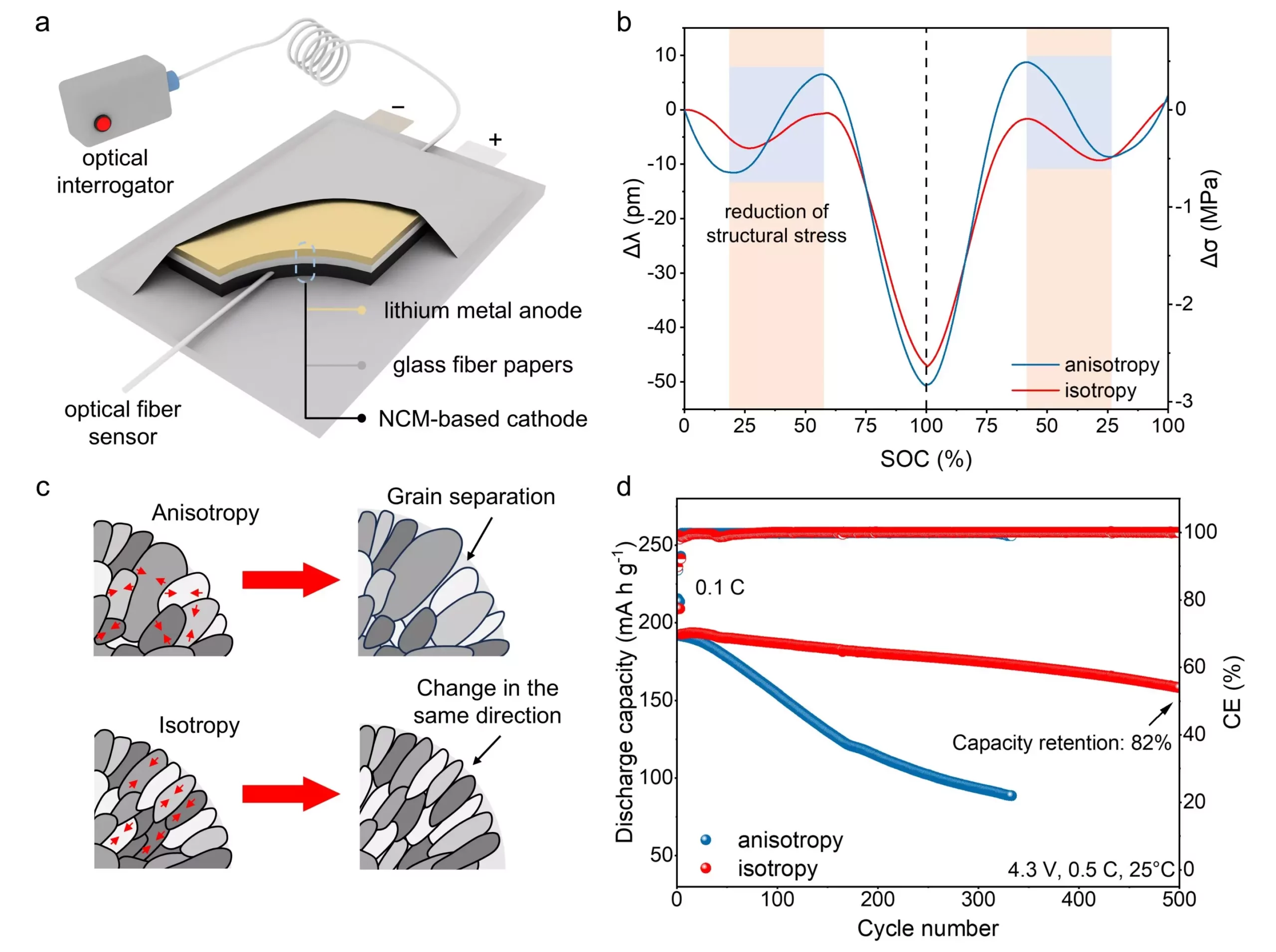NCM811 materials have emerged as pivotal cathode components representing the frontier of high energy density lithium-ion battery technology. Despite their promise, these materials face significant impediments that compromise their longevity and efficacy. The primary issue lies in the development of cracks within poly-crystalline NCM materials, a phenomenon triggered by mechanical stress during battery operation. This stress not only exacerbates the deterioration of active components but also limits the overall lifecycle of the batteries, making it critical to investigate and address the underlying chemical and mechanical dynamics at play.
In response to this challenge, a research initiative spearheaded by Professors Yunhui Huang and Zhen Li has made significant strides in understanding the chemo-mechanical evolution of NCM811 cathodes. Their innovative approach involves utilizing optical fiber technology to monitor stress changes in real-time within operational batteries. This integration not only provides valuable insights into material behavior during charging and discharging cycles but also minimizes the impact on battery performance due to the small size and stability of the optical fiber.
This novel methodology allows for the in operando visualization of stress evolution, revealing that NCM811 materials undergo two distinct types of stress: chemical and structural. Understanding the characteristics of these stresses is crucial in determining the reliability and efficiency of batteries over time.
Chemical stress arises from the inevitable process of lithium-ion intercalation and deintercalation during battery operation. While it is a predictable part of the cycling process, structural stress poses a greater threat, as it is directly linked to the formation of cracks that can severely hinder battery performance. The research highlights a clear relationship between structural changes in the cathode material’s crystalline structure and the observed performance degradation. Specifically, the team implicated nonmonotonic fluctuations in the c-axis of the crystal lattice and the inherent anisotropy in poly-crystalline grains as significant contributors to structural stress.
To combat these issues, the researchers propose enhancing the ordering of primary particles within the poly-crystalline structure, aiming to create a more uniform and stable arrangement. By promoting this ordered architecture, the structural stress can be mitigated, yielding substantial improvements in performance metrics.
The results from the team’s investigation are promising; they report that poly-crystalline structures exhibiting enhanced order demonstrate a remarkable capacity retention of 82% after 500 cycles at a current rate of 0.5C. Such performance underscores the potential of these engineered materials to reshape the landscape of lithium-ion batteries.
Prof. Huang emphasizes the significance of optical sensing technologies in this field, asserting their capacity to unlock critical understanding of battery behavior and material interactions. As research in this domain progresses, such methodologies will be pivotal in developing more reliable, efficient, and safer battery systems, paving the way for technological advancements that will ultimately revolutionize energy storage solutions. Thus, the future of battery technology appears brighter, with a promising array of strategies at hand to enhance the stability and longevity of critical materials like NCM811.

